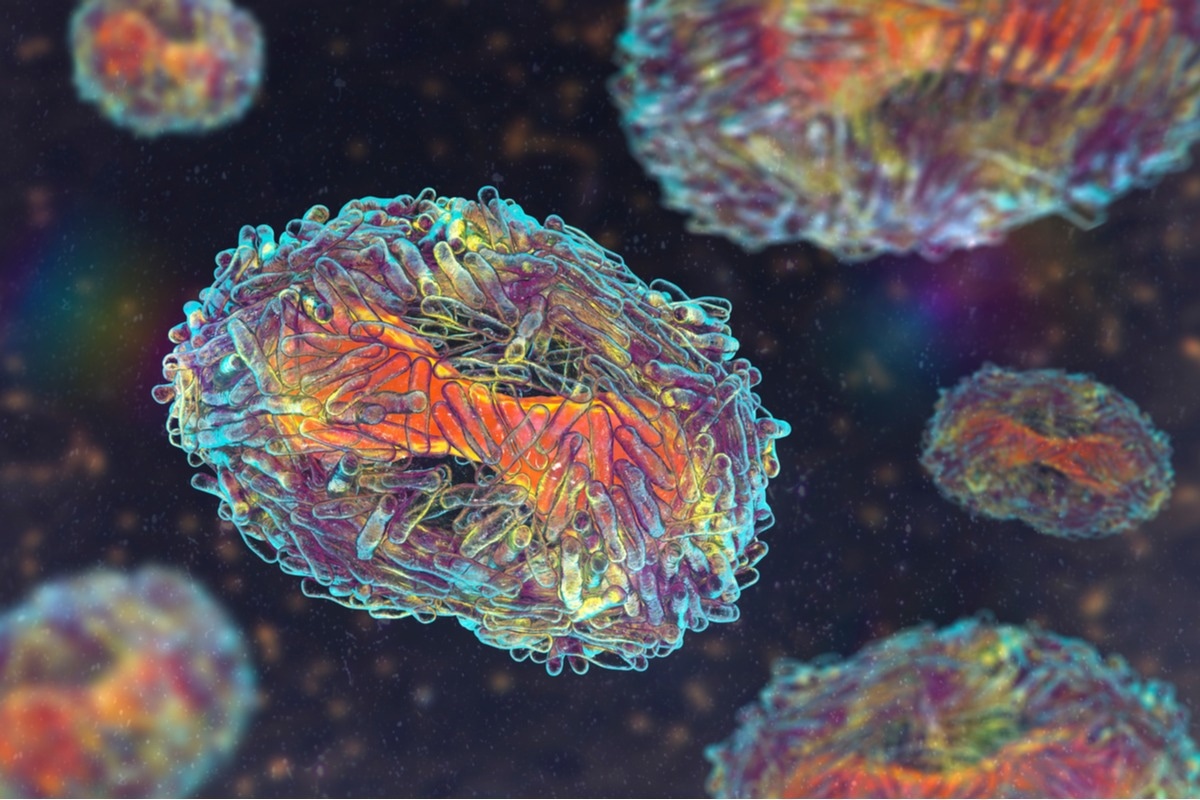In a recent study posted to the bioRxiv* preprint server, researchers described the evolutionary profile of the monkeypox virus.
 Study: A peculiar evolutionary feature of monkeypox virus. Image Credit: Kateryna Kon/Shutterstock
Study: A peculiar evolutionary feature of monkeypox virus. Image Credit: Kateryna Kon/Shutterstock

 *Important notice: bioRxiv publishes preliminary scientific reports that are not peer-reviewed and, therefore, should not be regarded as conclusive, guide clinical practice/health-related behavior, or treated as established information.
*Important notice: bioRxiv publishes preliminary scientific reports that are not peer-reviewed and, therefore, should not be regarded as conclusive, guide clinical practice/health-related behavior, or treated as established information.
Between 1 January and 15 June 2022, over 2,100 infections of the monkeypox virus have been detected in 42 countries. The surveillance of viral transmissibility corresponding to the monkeypox virus (MPXV) is extremely important to curb the monkeypox epidemic.
About the study
In the present study, researchers reported a non-canonical ribonucleic acid (RNA) secondary structure called the G-quadruplex (RG4) present in the MPXV variants.
The team employed a quadruplex forming G-rich sequence (QGRS)-mapper to assess the putative G4-forming sequences (PQSs) present in the MPXV genome. Since MPXV has accumulated various mutations across different variants, the team obtained 177 complete viral genomic sequences corresponding to the MPXV genome. These genomic sequences were used to predict the varied PQSs present in the viral strains and analyze the magnitudes of sequence conservation among the PQSs.
The evolutionary relationship between the different C9L PQSs found in the various MPXV strains was identified by analyzing the phylogenetic tree as per the 177 whole-genome deoxyribonucleic acid (DNA) sequences of MPXV. The generation and stability of the RG4 structures present in the nine C9L PQSs were assessed by conducting a fluorescent turn-on assay using a thioflavin T (ThT), which is a G4-specific fluorescent probe.
Results
The study results showed that out of all the MPXV genome sequences, only one PQS was located in the region corresponding to the coding sequences (CDS) in the C9L gene. The C9L gene in the MPXV encodes a Kelch-like protein that is essential in inhibiting innate immune responses related to the host. The team noted five to eight G-tracts in nine variants corresponding to C9L PQSs. Some of the C9L PQS variants displayed G-tracts with three G-bases, while others had two G-bases.
Furthermore, the C9L PQSs related to the different viral strains displayed diverse G-scores as well as overlaps, which suggested varied stability and potential for the formation of G4. Five G-tracts present in the C9L PQSs were found to be highly conserved within the MPXV genome, suggesting a potential function in the viral life cycle of MPXV.
The team also observed that MPXV has two primary genetic clades, the Western African clade, and the Central African clade, along with other subclasses. All the genomic sequences detected in the MPXV cases were significantly related to each other and belonged to the West African B.1 clade. Furthermore, the MPXV genomes found in the A.1, A1.1, and B.1 clades contained C9L-RG4-5, which is the PQS having the least number of G-tracts while the rest of the clades had PQSs having more G-tracts. This suggests that the C9L RG4 has an evolutionary function.
The fluorescent assay with thioflavin T showed that the annealing of the C9L PQS oligos led to an increase in the fluorescent signal of ThT. On the other hand, the G-A mutation of the G-tracts of the C9L PQS did not increase the fluorescent intensity. This suggested that the nine C9L PQSs could effectively form G4 structures within a general cytosolic condition. Furthermore, the C9L PQS oligos displayed varied fluorescent intensity at the peak wavelength at the same concentration as ThT, suggesting that the mutations accumulated in the C9L G4 motifs regulated the stability of the RG4 structures.
Furthermore, the team observed that the stability of the C9L RG4 was higher in the Central African clade than in the West African clade. The strains related to the West African clade comprise the most unstable motif called C9L-RG4-5, while the strains belonging to the Central African clade primarily contain the comparatively more stable motif called C9L-RG4-7-2G3. The team also noted that the RG4 motifs belonging to the MPXV strains that have similar evolutionary distances also have similar stabilities. Moreover, the highly stable C9L RG4 motifs, including C9L-RG4-8-2G3, C9L-RG4-8-3G3, and C9L-RG4-8-5G3 were detected in only a few strains, which indicated a low contagion. This data indicated that MPXV evolution was likely to reduce C9L-RG4 stability and thus boosted the spread of MPXV.
The RG4 structure present in the CDS region was also found to effectively inhibit the translation of proteins according to the stability of the RG4 structure. Since the C9L gene is associated with the inhibition of host immune response, the team inferred that the genetic evolution of C9L-RG4 could control the activity of MPXV by enhancing the C9L protein level. This suggested that improved MPXV transmission is correlated to C9L-RG4 evolution.
Overall, the study findings showed that MPXV evolution leads to the generation of increasingly unstable C9L RG4 motifs while the current MPXV strains have shown the presence of the highly unstable C9L-RG4-5 motif.

 *Important notice: bioRxiv publishes preliminary scientific reports that are not peer-reviewed and, therefore, should not be regarded as conclusive, guide clinical practice/health-related behavior, or treated as established information.
*Important notice: bioRxiv publishes preliminary scientific reports that are not peer-reviewed and, therefore, should not be regarded as conclusive, guide clinical practice/health-related behavior, or treated as established information.